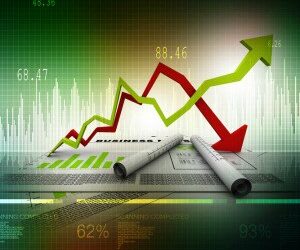If investors can’t learn from the supply chain crisis, they’re doomed to repeat it.
Speaking to InvestorDaily, project44 vice-president for data insights Josh Brazil said that the base place to start when it comes to understanding the nuances of the supply chain crisis isn’t the pandemic itself.
Instead, he pointed to the supply chain status quo that preceded COVID-19 and what the rapid shift in consumer demand meant for it.
“The entire globe literally changed what they buy and how they buy it within a matter of months,” he said.
That upending has created big challenges for logistics operations.
For the last 40 years, the global supply chain has been increasingly geared towards “just-in-time” delivery. This approach to manufacturing and logistics reduces costs by cutting down on inventory and storage requirements of international trade.
Rather than fully build and stockpile products ahead of time, larger companies are able to benefit from the increased efficiency that comes with synchronising the manufacturing and delivery process.
Popularised by tech companies like Apple, this style of supply chain management has become the standard for global brands like Toyota, Dell and even McDonalds.
However, Mr Brazil said that this model has been turned on its head by the pandemic.
“The global supply chain is fragile and when massive demand shocks arise, shifting sourcing, supply and warehousing to accommodate all of what has thrown the industry into a tailspin,” Mr Brazil suggested.
According to him, the current situation is more of a just-in-case supply chain, with shippers buffering their orders in anticipation of potential delays or shocks.
When one company does this, the impacts are limited. However, the supply chain crisis has been extended and worsened due to the fact that all companies are now looking to hedge their bets in case they get burned a second time.
Mr Brazil said that the current and ongoing supply chain crisis was no more avoidable than the COVID-19 pandemic was.
“Much like controlling the pandemic relies on reliable data such as infection rates to prevent ICUs from becoming overwhelmed, supply chains also require reliable data to predict demand, monitor global trade flows and manage inventory,” he said.
In the wake of recent disruptions, supply chain operators have come to the realisation that advanced data visibility solutions are the only way forward.
As a result, Mr Brazil said that many shippers are investing heavily in supply chain visibility software to track and monitor their shipments across all modes.
“Some like the semiconductor industry are beginning to near-shore their manufacturing to be closer to their customers who need critical components such as automobile manufactures,” he said.
Mr Brazil explained that investors should keep their expectations in check when it comes to the supply chain crisis, adding that the situation will ease only when demand itself falls.
“After peak retail season 2021 and after the Lunar New Year in Asia when China effectively shutters manufacturing for two weeks will we see if demand drops back to normal levels,” he predicted.
In the meantime, Mr Brazil noted the shipping record profits despite record poor performance.
“Some goods and services have never had such record profits, while others lost out big time.”
The biggest thing that investors can learn from experience is that there are both winners and losers in times of crisis.
“The key for shippers and manufacturers is to have a diverse sourcing strategy and ample amounts of data to make informed decisions when exceptions or crisis hits,” he said.







